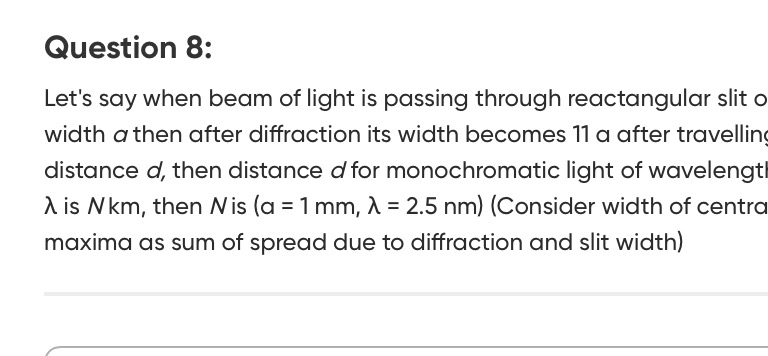Question
Question: Let's say when beam of light is passing through reactangular slit of width $a$ then after diffractio...
Let's say when beam of light is passing through reactangular slit of width a then after diffraction its width becomes 11a after travelling distance d, then distance d for monochromatic light of wavelength λ is Nkm, then N is (a=1 mm, λ=2.5 nm) (Consider width of central maxima as sum of spread due to diffraction and slit width)

2.2
1.1
3.3
4.4
2.2
Solution
The width of the central maximum (W) in a single-slit diffraction pattern is given by the formula W=a2λd. The problem states that the diffracted beam width is 11a, so W=11a. Equating the two expressions: 11a=a2λd. Solving for d: d=2λ11a2. Given a=1 mm =1×10−3 m and λ=2.5 nm =2.5×10−9 m. Substituting these values: d=2×(2.5×10−9 m)11×(1×10−3 m)2=5×10−9 m11×10−6 m2=2.2×103 m =2200 m. Since d=N km, N=10002200=2.2.
